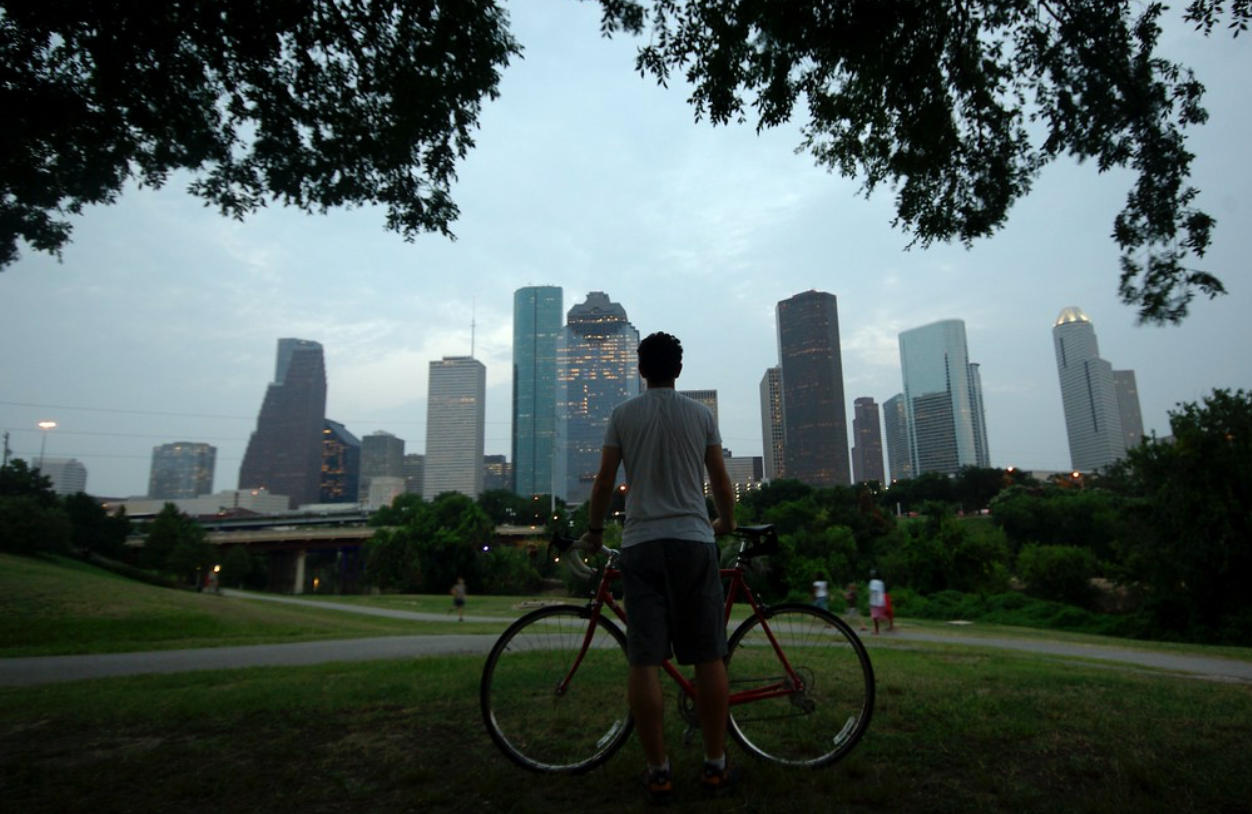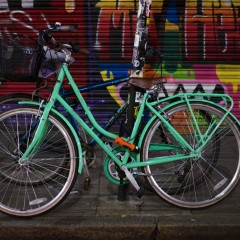The grand opening of Houston’s revamped Buffalo Bayou Park in October is the latest success in a string of greenspace improvements that mark Houston’s ongoing parks renaissance.
Since the opening of Discovery Green in 2008, the city, its residents and its philanthropists have doubled down on their political and financial commitment to parks. From the Bayou Greenways 2020 initiative, to the master plan development for Memorial Park, to the recent passage of a plan that aims to put every Houstonian within a 10-minute walk of greenspace, the city is experiencing a “parks moment.”
Ensuring the long-term success of these greenspaces, though, requires an effort to continuously draw visitors in with programming and amenities. To be well-functioning parks must be accessible and engaging for users. On both measures, the city has struck upon a surprisingly effective tool: bike-sharing.
The Kinder Institute’s new analysis of bike-sharing data shows that Houston’s investments in bike-sharing is clearly complementing its investment in parks. While bike-sharing systems in other metropolitan areas, especially on the East Coast, are primarily known for serving commuting needs, Houstonians are widely embracing bike-sharing for a different purpose: recreation.
Houston Bcycle, the non-profit company that provides short-term bike rentals at 29 kiosks across the city, has tied its system to both downtown parks and the trail system that connects them. Our analysis indicates Houston’s bike-share system success is largely due to the high volume of bike riders traveling to and through the city’s trail system and its major parks.
Our report compares systems in four Sunbelt cities (Houston, Austin, Denver, and Fort Worth) by examining the volume and type of bike-sharing activity that occurs in a typical week. Houston’s system, in particular, provides excellent connections to greenspaces. That, in turn, influences the way Houston’s use bike-sharing.
Houston’s six bike-sharing kiosks located in and around parks are easily the most used in the network in terms of ridership, and they are among the most popular stations across all four programs considered in our report.
Those kiosks are located in and around Hermann Park, Spotts Park, Stude Park, Eleanor Tinsley Park, and Discovery Green. These park stations anchor Houston’s entire network. Of all checkouts in the system, 55 percent either begin and/or end at one of these six greenspace stations.
If we cut more finely than simply overall ridership, we see that the majority of all trips within Houston’s bike-share system are round trips. In other words, they begin and end at the same station. These trips are more likely to be recreational in nature than two station trips.
Houston’s system generates far more round trips per kiosk than any other system we considered. The majority of those round trips, 64 percent, occur in the city’s parks. The Hermann Park station stands out, in particular. It has the highest ridership of any station in the city and ranks among the top stations across all four cities. During a composite week (where holidays were discounted) within the period we studied, January through May of 2015, a full 9 percent of all of Houston’s rides began and ended in Hermann Park.
Well-groomed trails and innovative park programming encourage residents and visitors to utilize the bike-sharing system for recreational purposes. Likewise, a fleet of readily available bicycles helps Houstonians to make the most of the city’s revitalized public green spaces.
For advocates of parks, physical activity and bike-friendly policies, the results of this park-focused approach have been encouraging.
Houston’s bike-sharing system is poised to expand to 100 stations over the next two years thanks to a $3.5 million allocation through the region’s Transportation Improvement Program. Houston Bcycle will add additional funding to this amount to reach $4.7 million for expansion.
This growth will coincide the city and region’s plans to expand bike facilities both on- and off-street through efforts like the Houston Bike Plan. When coupled with ongoing efforts to secure and activate greenspace, Houston’s parks moment is increasingly becoming a bike moment as well.


